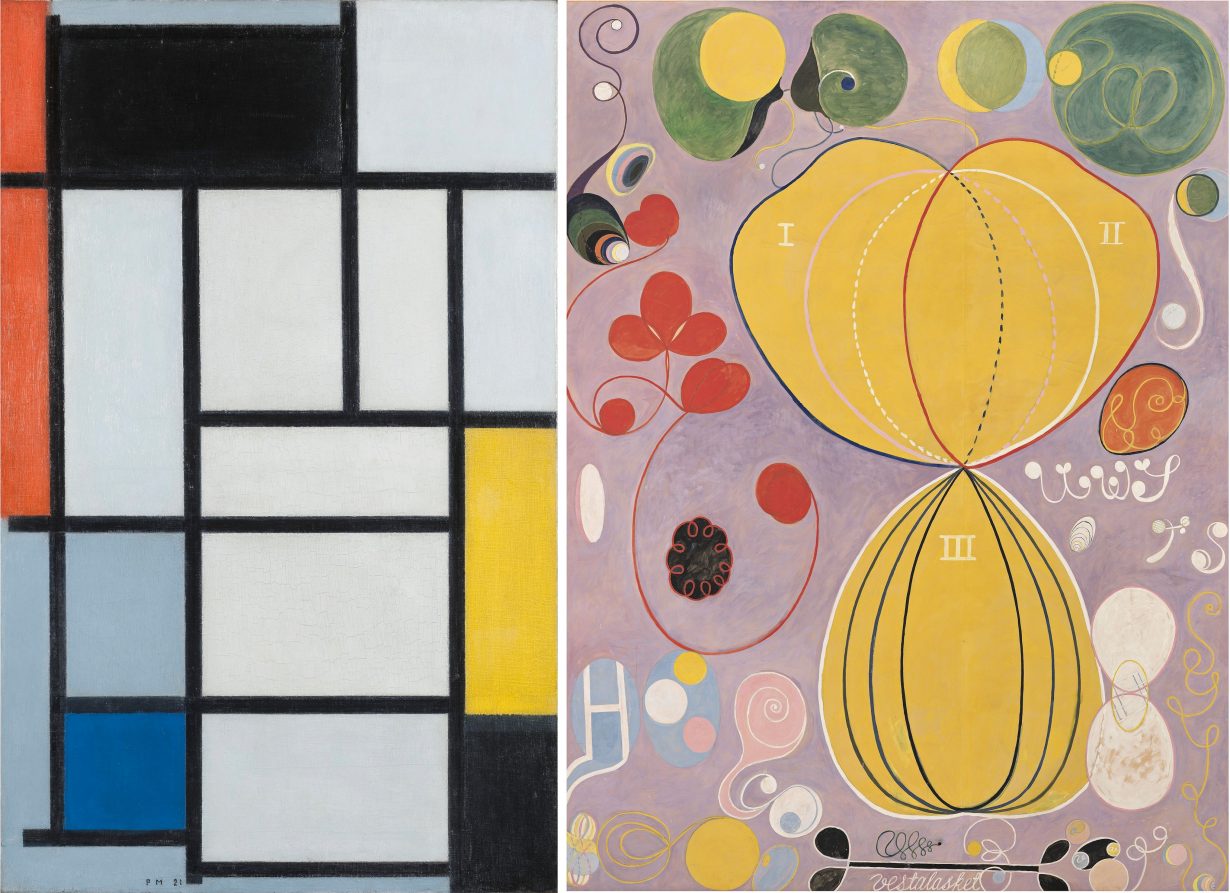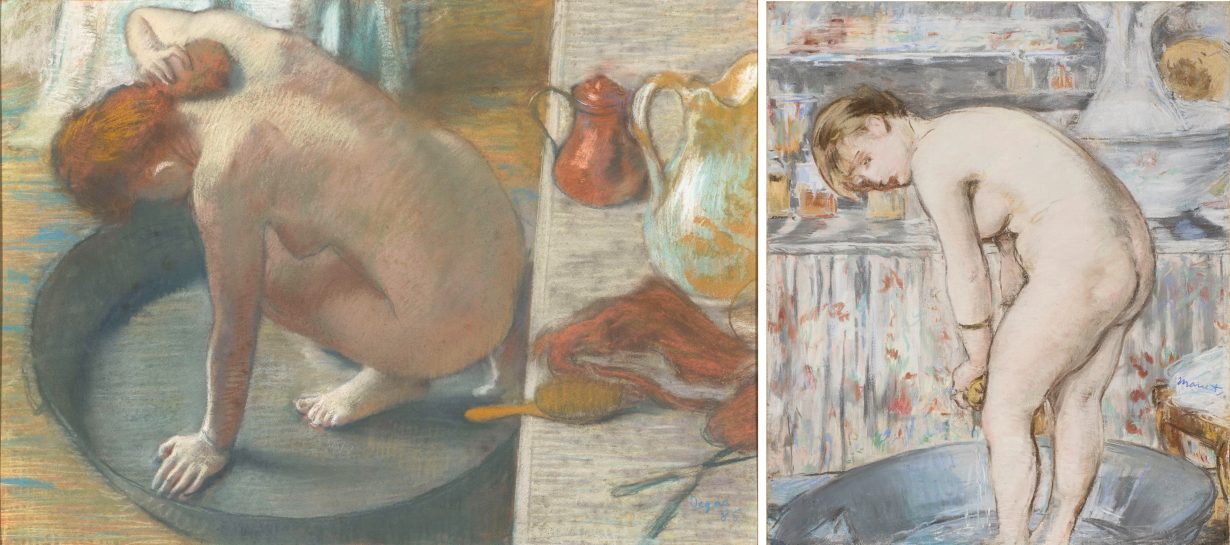What does the renewed popularity of the relational exhibition reveal about our contemporary fascination with rewriting art history for the present?
The intimacy of an artistic conversation between two artists is on a scale we often miss. Partners, friends, lovers, peers, even enemies: a dialogue that platforms two artists equally is a specific kind of window into their subjectivities, revealing each one both as an individual and in response to one another. Although dyadic or relational exhibitions seem to have a straightforward, obvious framework, they are not all created equal. Among recent duo or dialogue shows, there are the slightly gimmicky exhibitions that pair artists across time and space, like last year’s Monet-Mitchell at the Fondation Louis Vuitton, which choose aesthetic conversation over historicising, or shows about living artists, like the Getty Museum’s current Dawoud Bey & Carrie Mae Weems: In Dialogue, which are heavily guided by the personal relationship between the artists.
But there are also relational exhibitions that bring two historic artists together, like the two currently on view at the Musée d’Orsay and Tate Modern. They ask us to look at the conversations between artworks within their own historical circumstances, pushing us to see their artwork in more than one dimension, through different lenses, in contexts beyond the artists’ own subjectivity or intention, and in light of contemporary concerns. A successful relational exhibition transcends biographical narrative and allows us to see how the art itself creates a dialogue. It’s a reminder of the point of an exhibition, where objects are placed together in space, in a presentation format that must go beyond the means of a book, a film or an Instagram carousel. The embodied experience of moving between works makes their interplay tangible. The blockbuster dialogue exhibitions staged in London and Paris this year feel radical. Each one challenges the viewing public to rise to meet the curator’s vision and look at familiar work in new ways, which is a deceptively difficult task for curators. They also give multiple entry points for viewers, who might arrive more interested in one artist than the other.

Manet/Degas at the Musée d’Orsay brings together two giants of modernism. Manet and Degas knew each other, but their relationship was fraught and remains enigmatic. Manet was born in 1832, while Degas was born just two years later, and both lived and worked in Paris. The exhibition opens with a painting made by Degas of Manet’s wife at the piano. After it was completed and given to him, Manet cut the canvas in half and removed the part with his wife’s face. This violent act was never explained by the artist, but it sets the scene for an exhibition that is based in ambiguity, tension, and an exchange of ideas and ways of seeing. The traces of the relationship between the two artists that survive are fragmented, partly because some written materials have been lost or destroyed, and partly because relationships characterised by shared experiences and regular interaction often leave fewer written records in the first place. The narrative that emerges in the exhibition is therefore led by the work itself and the conversation that emerges from it.
I have never been particularly moved by paintings of horse racing, but when confronted with the contrast between Manet’s blurred, galloping moments and Degas’s anxious, milling-before-the-start steeds, I felt differently. The emotionality of the choice to paint the middle of a race versus the moments before the start struck me differently when I saw them side-by-side. The modernist drive to paint ‘the transient, the fleeting, the contingent’ has been so baked into history that it is easy to forget that there are more ways than one to achieve these ambitions. Both of these scenes of horses are all of those things, and seeing them in tandem is uniquely demonstrative of the diverging ways the two artists experienced modern life. For two artists whose work is vastly recognisable, it’s remarkable how much more looking there is to do when the stakes are altered.

In London, another exhibition that brings together two artists in dialogue opened at the Tate Modern last month. Hilma af Klint & Piet Mondrian: Forms of Life pairs two of the earliest European abstract painters for the first time. Af Klint and Mondrian never met, though they were born a decade apart in Sweden and the Netherlands respectively. Both were deeply involved in Theosophy, an occultist religion established in the nineteenth century—af Klint went furthest, considering herself a medium whose works were made by spiritual forces. The spiritualist and occult roots of abstraction have long made scholars and critics uncomfortable, given the belief that modernism represented the unravelling of the relationship between art and religion.
Both Mondrian and af Klint were inspired by nature, and their early work depicts flowers and landscapes before becoming almost entirely nonrepresentational. They took different aesthetic approaches, with af Klint choosing bright colours, curved lines, and warm, sensuous forms and Mondrian slimming his work down to primary colours and straight lines. But seeing them together reveals the many ways they are similar. Af Klint’s mandalas are strikingly mathematical, and many of her curving, floral forms are set against a background made of straight-edged geometric shapes. Mondrian’s groups of lines are straight, but in works like Composition in Line, Second State (1917) the lines themselves sit in an amorphous, rounded cloud. There is so much visual overlap between these works that, when viewed in isolation, seem to be opposites.

But here the curators seem afraid to ask viewers to look at Mondrian and af Klint alongside one another and interspersed in the way that the Orsay show does so well. In every room in the exhibition, work by one artist is hung on one wall, and work by the other on the opposite wall. There is no opportunity to see them next to each other. We are prompted by the textual narrative of the exhibition to see the many parallels between the two artists – their interests in Theosophy, nature, shape and colour – but we can never really compare them. Why the decision to keep them separate? Neither artist would be made smaller by the comparison. Af Klint remains less well-known than Mondrian to general audiences, partly due to the stipulation in her will that her works remain hidden for twenty years after her death. But her reputation has skyrocketed in the past decade, supercharged by the Guggenheim Museums’ record-breaking 2018 exhibition of her work .

Staging exhibitions that focus on two artists is not a new curatorial strategy, but its progressive potential and politics feel newly relevant. As discourses about radical intimacy and the importance of collective advocacy gain momentum, especially in the wake of the pandemic, so does the power of curating exhibitions that create critical dialogues between artists. These two shows grapple with big questions about how to create an intentional, persuasive dialogue without fabricating an imagined narrative or forgoing equity between the subjects of the exhibition. One succeeds more than the other, but both prompt a reckoning with curatorial conventions and a recognition of the potential for relational exhibitions to reframe artists for contemporary audiences. Rather than writing off historic art as irrelevant or outdated, we can confront it in ways that bring the past into the present and ask essential questions about how we continue to construct the narrative of art history.
